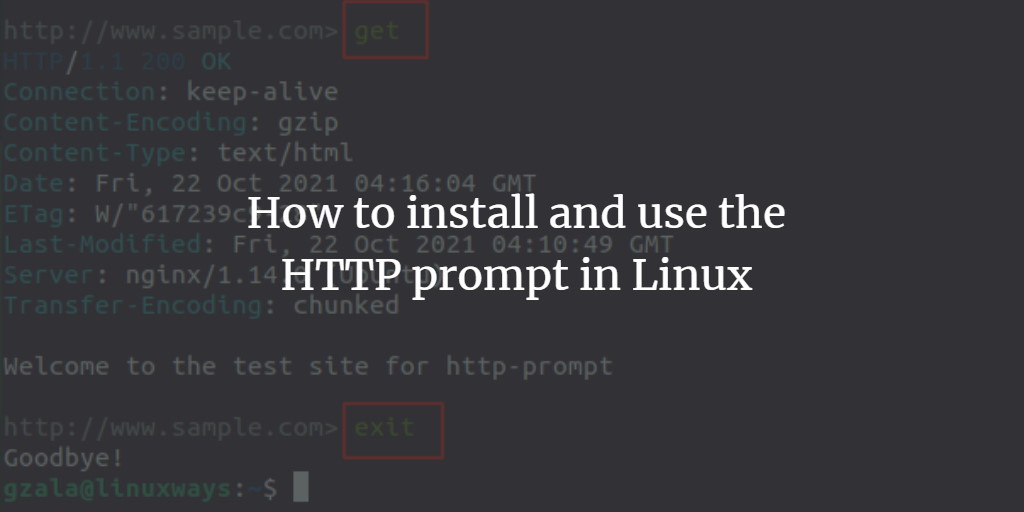In this article, we are going to discuss the installation process and use cases of HTTP Prompt. HTTP Prompt is an interactive command-line HTTP client which is used for testing and debugging purposes and built on HTTPie and HTTP Toolkit. It has a special feature of auto-complete, interactive, and syntax highlighting. It has other features as well such as auto cookies, Unix-like pipelines, OpenApi/Swagger Integration, and HTTpie compatibility.
Installing the HTTP Prompt in Linux
To install HTTP Prompt, python and pip must need to be installed already. You can then install HTTP prompt as given below by using the pip command.
$ pip install http-prompt
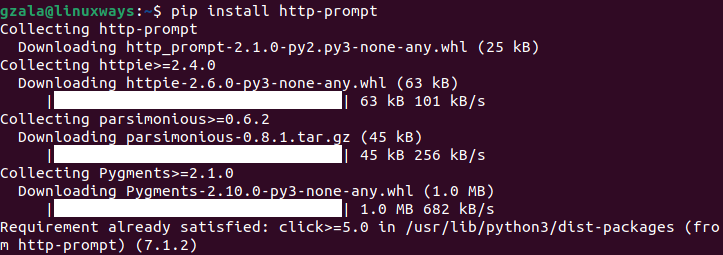
Note: While using pip command, using sudo is not recommended.
Upgrading the HTTP Prompt:
$ pip install -U http-prompt
Validating the installation of HTTP Prompt:
$ http-prompt --version
Using the HTTP Prompt in Linux
For the session to start, run the command as shown below:
$ http-prompt

As the session starts, you can try using such commands as below:
$ http-prompt

Here, we are using httpie get to check how Http Prompt is requesting get for Httpie.
You can also send other methods for which you can use below commands:
- > put
- > patch
- > post
- > head
- > get
- > delete
For example:
Lets run another session for https://example.com by typing this command on the command line terminal. The session will be started for a given url by starting http-prompt as shown below.
$ http-prompt https://example.com
This command will create a session where we can interact by issuing the command which displays HTTP response. As HTTP Prompt has an auto-complete feature, it will show us the option to auto-complete the command which makes it simpler to use.
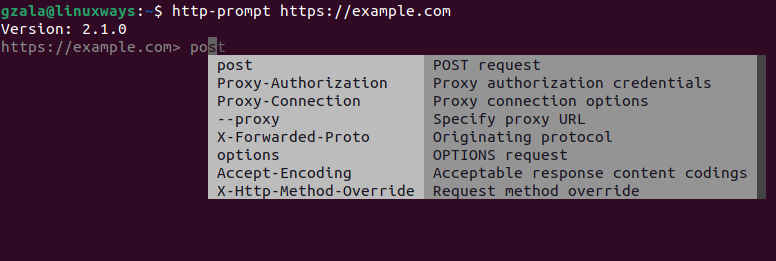
You can see the auto-complete options just by putting a post on the above picture.
Now, after putting a post on the current session, you will see the output as follows.
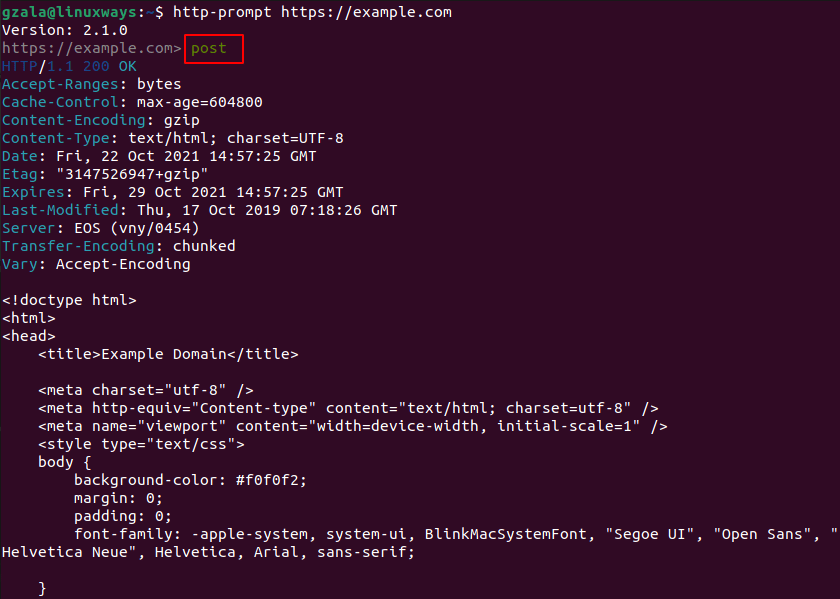
Second example
Let's run a session for https://sample.com by typing this command on the command line terminal. Session will be started for a given url by starting http-prompt as shown below.
$ http-prompt http://www.sample.com
This command will create a session where we can interact by issuing the command which displays HTTP response. As HTTP Prompt has an auto-complete feature, it will show us the option to auto-complete the command which makes it simpler to use.
Now, after putting a head and get on the current session, you will see the output as follows.
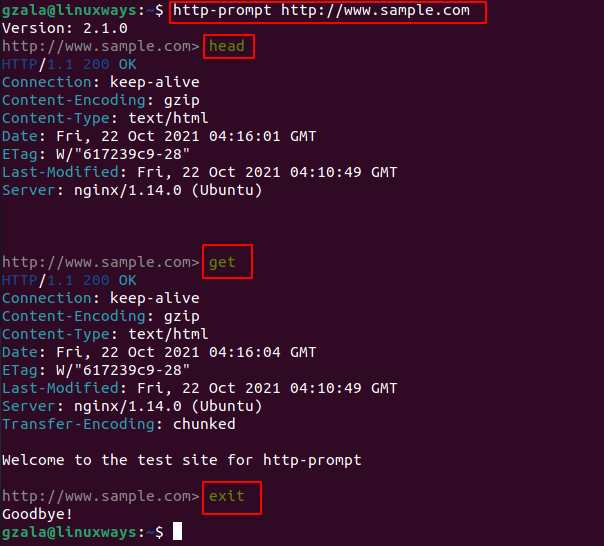
Here, we run head and get methods which results as shown in the above picture for the particular site.
By using the syntax as in HTTPie, we can add headers, querystring or body parameters. You can see below for further details.
# For Header
> Content-Type:application/json
# QueryString parameter
> page==4
# Body Parameters
> username=linux
> full_name='linux ways'
# Body Parameters in raw JSON
> number:=8569
> is_ok:=true
> names:=["linux","ways"]
> user:='{"username": "linux", "password": "lways"}'
# Write all in one line
> Content-Type:application/json page==4 username=linux
We can also add HTTPie options as shown below:
> --form --auth user:pass
> --verify=no
# HTTPie options and request parameters in single line
> --form --auth user:pass username=linux Content-Type:application/json
Now, you can remove all options and parameters with below command:
> rm *
Also, you can simply exit the session with below command:
> exitConclusion
HTTP Prompt is used for testing and debugging HTTP requests in an interactive way with a feature of auto-complete the commands and syntax highlighting as well. It is a good ally of HTTPie. Thank you!
